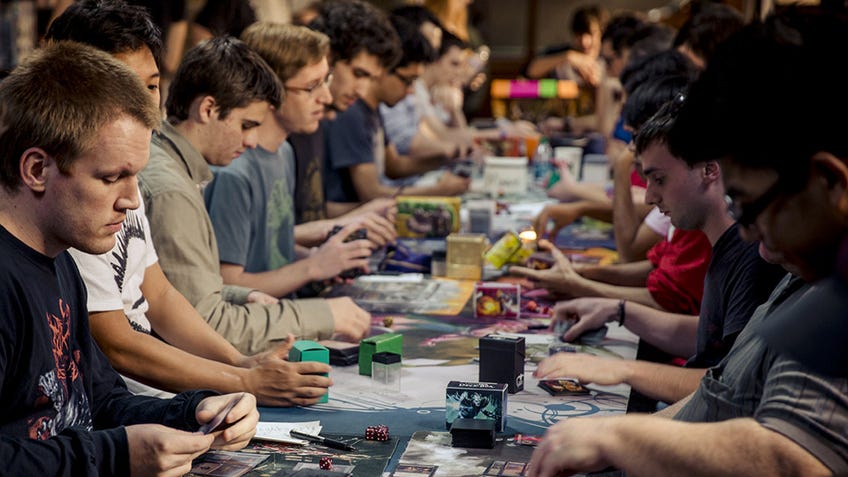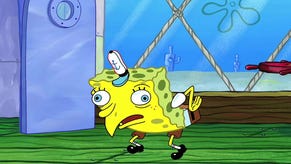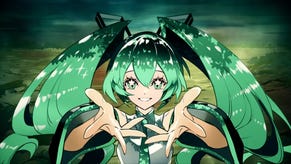How to build a Commander deck in Magic: The Gathering
Zero to 100.
Commander is the most popular MTG format around. It pits you and a legendary creature of your choice against an opponent (or multiple opponents) and a legendary creature of their choice (choices?) It’s an epic battle between 100 of your cards and 100 of theirs. Ultimately, it’s just an awful lot of fun.
Even if you already know how to play Commander, you might be new and unsure as to how to make your own mark on the format. Here’s what you need to know to build your own Commander deck.
How to build a Commander deck in MTG
- How many cards are in a MTG Commander deck?: The number of cards in Commander’s super-sized decks and whether your commander counts towards the total.
- Choosing a commander or theme: Tips on picking the best commander in MTG and building your deck around a specific play style or theme.
- MTG Commander deck building ratio: How many lands, creatures and other cards you should include in your Commander deck.
- What should be in a MTG Commander deck?: Everything else you’ll need in your 100 cards.
- Improving your MTG Commander deck: How to take your deck from built to brilliant game after game.
How many cards are in a MTG Commander deck?
A Commander deck is 100 cards and you can’t have more than one of any card that isn’t a basic land. That means it’s a little bit harder to try and optimise than most formats, but that’s also a big part of its charm. Your commander counts as one of those 100 cards, and they start the game in the Command Zone rather than in the deck. The commander also dictates what colours you can use in your deck. If your commander is a Red and White creature, then you can only have Red, White and Colourless cards in your deck.
Choosing a commander or theme
The first thing you should do when making any Commander deck is to, well, pick a commander. A commander can be any legendary creature that you like. It can even occasionally be a planeswalker, but only very specific ones, so it’s usually best to just stick to creatures. Actually, it doesn’t always have to be the commander - sometimes it can be a theme or a strategy. Let’s say you know you love dragons but you’re not sure which commander would best suit that love. Well then, you’ve got your theme, so you just need to find a commander. Likewise, sometimes you’ll see a legendary creature you adore but be unsure how to build around them, in that case, you need to find a theme.
Sometimes the theme is tribal, like everything being dragons. Other times it’s a strategy - for example, knowing you want to play as many lands as possible or win using an alternate win method, such as milling your opponent so that they lose when they can’t draw any cards. No matter what it is, having a strong core idea to build around is going to make your decks much easier to make.
It doesn’t always have to be an obvious one either; sometimes just wanting to play all of the best cards in a mana colour is a good enough idea. That said, the more niche it is, the more fun you’re likely to have - and the more creative you can be with your card choices. A big part of the fun of Commander is in building a deck and finding obscure cards to include. It’s not always about winning.
MTG Commander deck building ratio
Once you’ve got your theme, you need to flush out the deck itself. As a general rule of thumb, you want somewhere between 33 and 42 lands in a Commander deck. Naturally, you want as many special lands as you can find. Lands that generate more than one colour of mana or that have special abilities are always a great shout. The exact amount of land you’ll want is dictated by how high the mana costs in your deck are and also whether or not you’ve got reliable ramp (always have a Sol Ring) or if you’ve got other ways of playing your cards, such as bringing them back from the graveyard after discarding them.
That leaves you with around 60 cards to choose. Of those, you’ll want roughly ten bits of removal and interaction in your deck. Sometimes that’s going to be board wipes that kill everything on the battlefield and sometimes it’ll be targeted removal that lets you choose a single creature or enchantment to take out. Generally speaking, you want to try and find cards that affect all of your opponents while leaving your own stuff untouched. Cards such as Cyclonic Rift, for example.

Different colours will have different removal, so Black and White are going to be able to use cards that destroy and exile. Blue will have to counter spells or put creatures back in their owner’s hands. Red will be able to use spells that deal damage to destroy things, and Green is stuff with cards that let your creatures fight other creatures. There are cards that break these rules but, generally speaking, this is what you’ll be working with in each colour.
Finally, you’ve got a mix of creatures and every other type of spell. Most Commander decks are going to want the vast majority of the remaining cards to be creatures, but if you’re playing a deck that only cares about a different type of card, say instants or enchantments, then you’ll likely want to finish the deck off with those instead. It’s worth noting that you can have other legendary creatures in your main deck too if you want, as long as they’re in the right colours.

What should be in a MTG Commander deck?
Now that you’ve got your interaction and a rough idea for your land base, you’re left with around half your deck left to fill out. This is where things get really fun.
You can now fill your deck with as many on-theme cards as you can find. As long as they all play well together you can do whatever you want. This is where deck-builders will have the most fun. You’ll still want a nice bell curve of mana costs in your cards, but unless you’re playing cEDH (competitive EDH, a hellscape where games end before you’ve even finished shuffling - fun, but in a horribly different way), you can have a bit more fun.
That means you can throw in a couple of big old cards into the mix, Commander is where those seven-mana do-nothing enchantment cards that get printed come into their own. If you’re not sure what they are, take a look at Mind’s Dilation. This seven-mana enchantment makes it so whenever an opponent casts their first spell of the turn they have to exile the top card of your deck. Then - and this is where it gets good - you can cast that spell if it’s a nonland card. Those are the kinds of cards made for Commander.
The specifics of the cards in your deck is up to you, but if you’re struggling for inspiration then sites such as EDHREC can help massively thanks to the huge amount of data they collate and the rule of the masses. Of course, you could always just try searching for certain keywords that fit your idea on a site like Scryfall, too.
Improving your MTG Commander deck
You’ve now got your 100 card deck. You’re happy with the land count, the removal and everything else. What’s left?
This is where you’ll need to start making tweaks. The more you play your deck, the more you’ll realise that some cards just aren’t doing anything and should probably be replaced. You’ll know when this is the case when you’re usually unhappy to see a card instead of happy to see it. If it doesn’t bring you joy, throw it into the nearest wall and choose something else.
You’ll also get a feel for the land and removal. Sometimes your initial estimations about the number of each you need can be off; sometimes you’ll have too many of one colour land and not enough of the other. These issues are ironed out by playing with the deck and tweaking it constantly.

Building a Commander deck isn’t a static thing; it flows. You’ll spend all of your time with any deck messing around with the cards in it or adding in new ones from new sets that release. Sometimes a friend will have a card that you didn’t even realise existed, and suddenly you’re searching for a card that might be older than you, just to try and improve your deck.
If you end up enjoying this process, it’ll never end, and that’s a lot of fun. Commander is the MTG format that allows the most creativity, and it’s the bastion of deck brewers, casuals and competitive players alike. It’s good fun because anything is possible, and you’ll end up doing things that are completely impossible in any other format. Keep that in mind when you’re building a Commander deck and you’ll not only have fun, you’ll constantly get better at building the decks, and then you’ll start winning more too.
Sure, winning isn’t everything, but swinging into the opposing player with an army of 40/40 snake tokens never gets dull.










